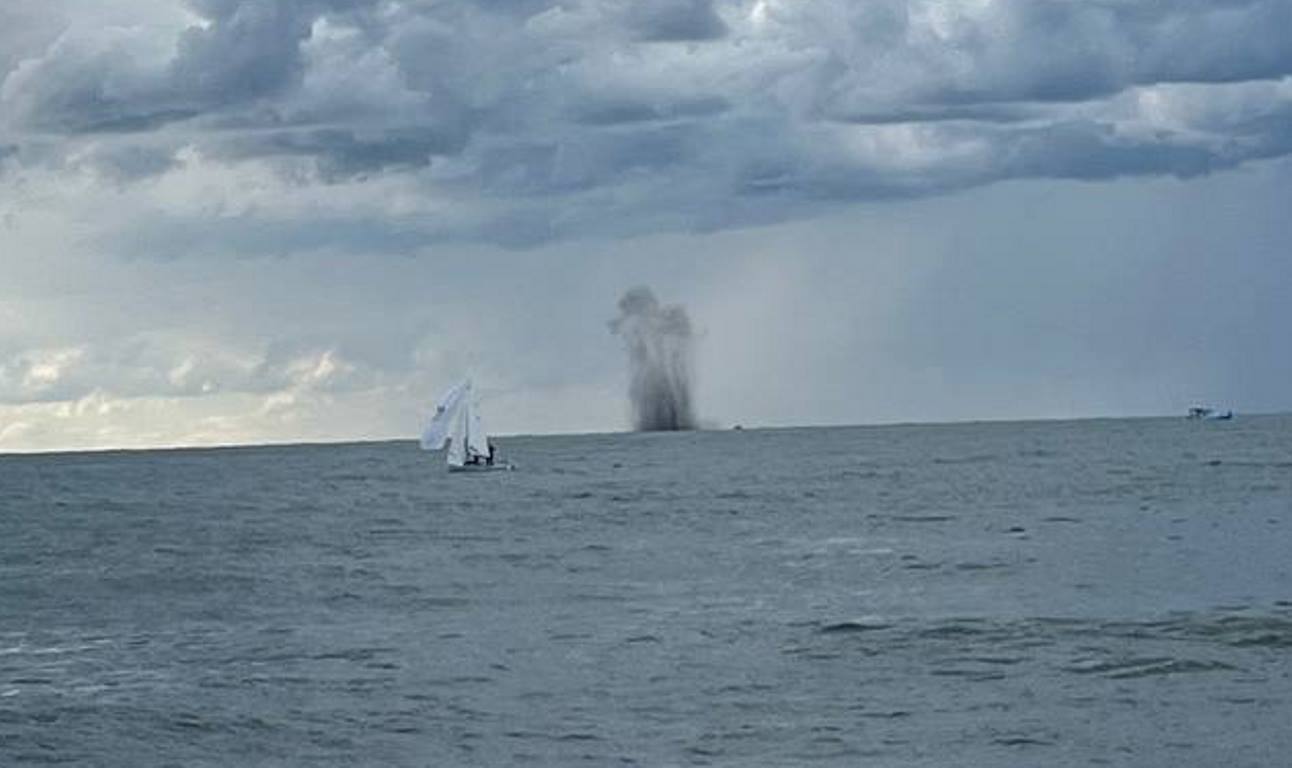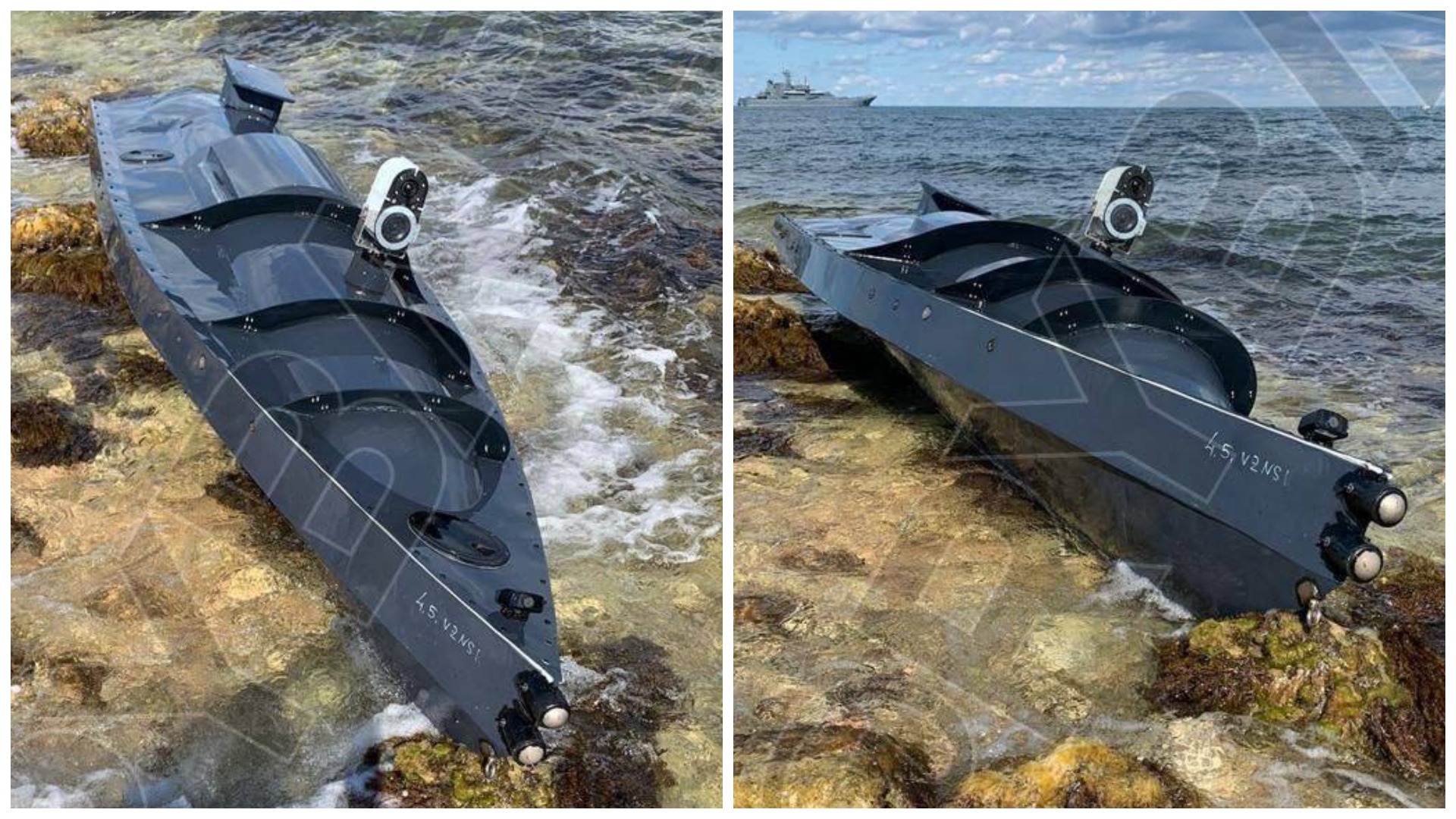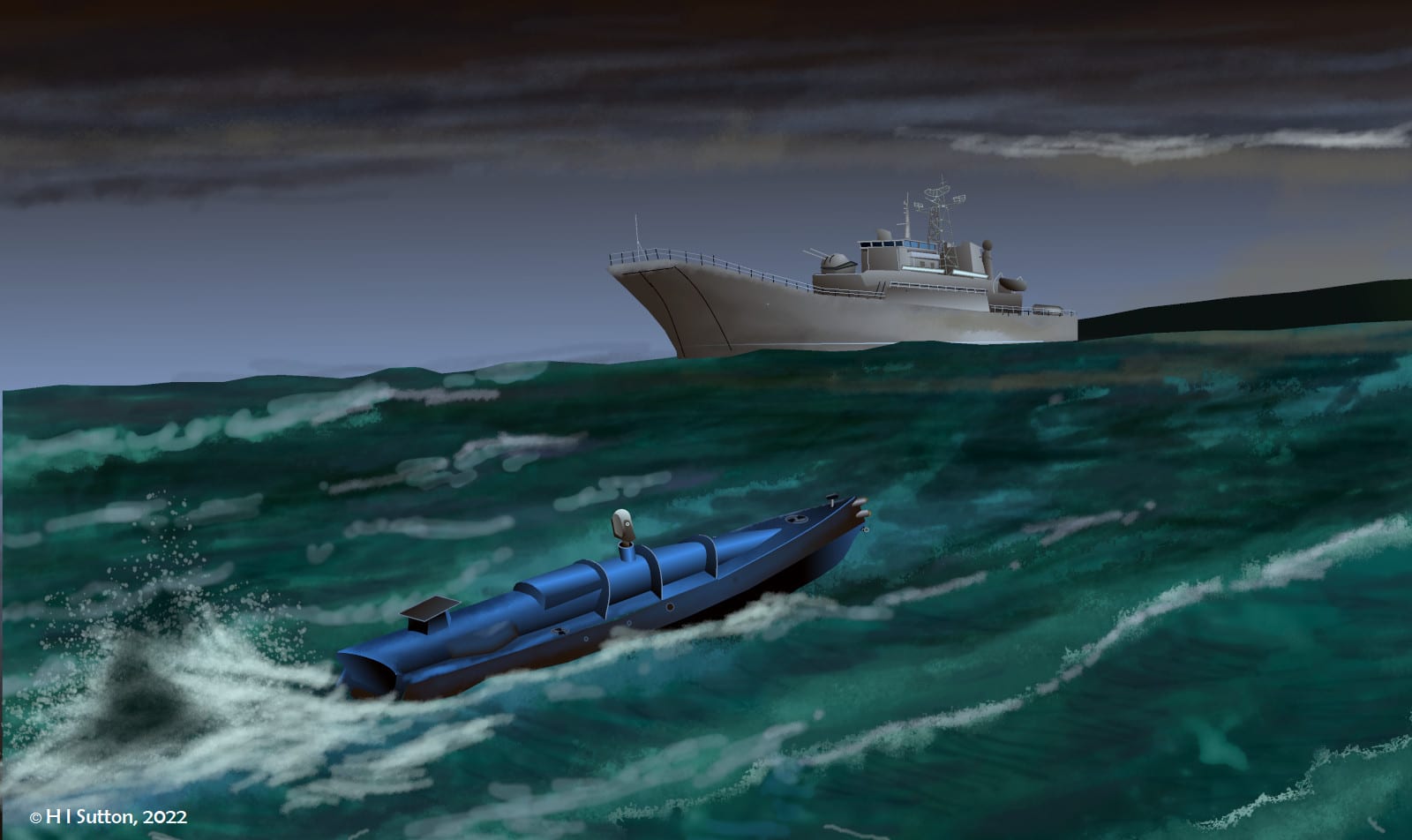War in Ukraine: Mysterious surface drone discovered off Crimea

An unmanned military surface vehicle of an unknown type was discovered near the Russian naval base in occupied Sevastopol.
The detection of the drone coincided with a strong explosion in the Black Sea which was filmed by eyewitnesses on the beach.
The representative of the Crimean occupation authorities, Mikhail Razvozhaev, said the vehicle was towed to the sea and destroyed.
“Today part of an unmanned surface vehicle was discovered there. After the examination, the specialists destroyed it. So the explosion was heard by a lot [of people]. There is no danger,” said Mikhail Razvozhaev.

The unmanned surface vehicle can likely be controlled both manually using on-board television cameras and remotely via a satellite channel.
The flat, square-shaped object on top of the boat, closer to its stern, is similar in some general terms to the SpaceX Starlink satellite internet antenna. This part can be an antenna connected to a communication/data exchange system.

The English marking indicates a probable producer: one of the Western countries.
The supply of unmanned surface vehicles for the needs of the Armed Forces of Ukraine was evoked a few months ago, but the type of devices was not named.
The drone is powered by a single internally mounted motor, driving a controlled water cannon. It's for speed.
Such a small, kayak-sized vessel will likely have very little radar visibility.

There are several sensors at the top. The main ones are an infrared forward vision device and a camera mounted on the mast.
This is probably the primary sensor for direction and situational awareness. Behind the camera is a flat antenna, possibly for navigation and communication.
The nose has a smaller camera or sensor that appears to be mounted forward. The nose has two front sensors.
Presumably, its curved shape with external reinforcement suggests the presence of an explosive.
Analysts suggest that the visual characteristics of the car are similar to those of a "kamikaze" type drone with a detonating warhead.

“The theory is that this device is designed to ram an enemy ship and blow it up. This also explains the cluster of sensors on the nose,” analysts suggested.
The explosion in the Sevastopol photos also confirms the assumption that there were explosives in the drone, but it cannot be ruled out that the device was taken for study.
It is also not excluded that the drone will be used for surveillance and reconnaissance missions.

This unmanned surface vehicle can provide valuable information before a special forces mission.
It is likely to provide additional situational awareness while driving and help assess the situation after the mission.
0 comments